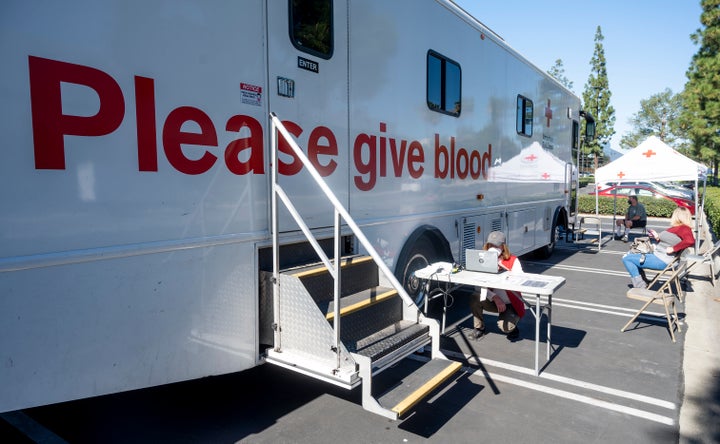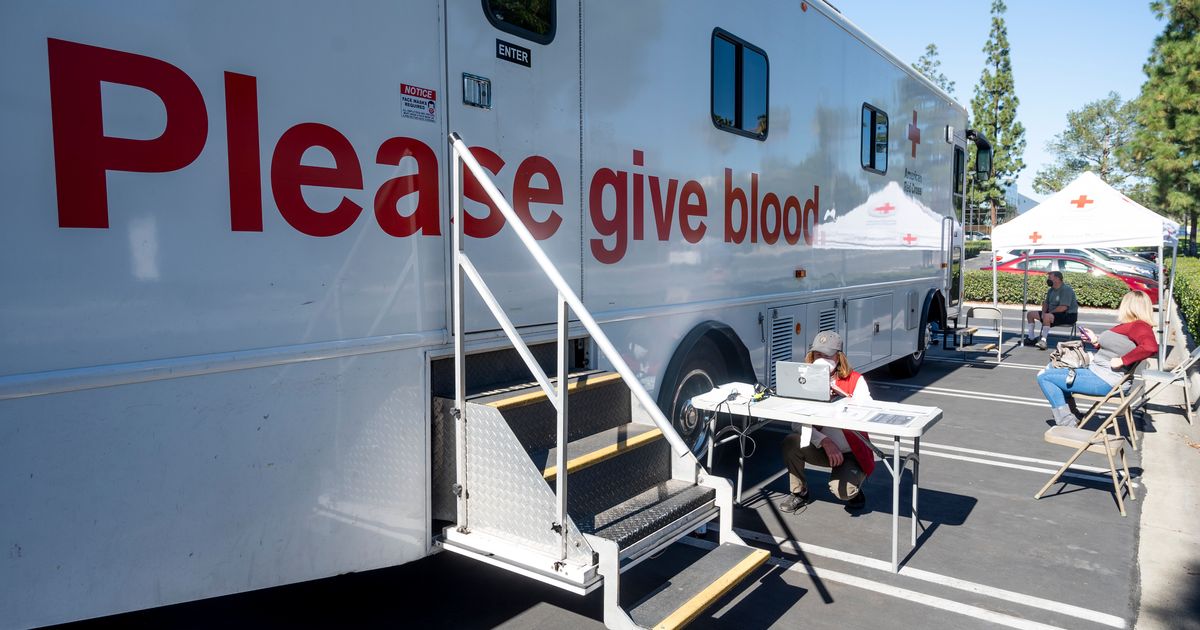The national blood supply of the American Red Cross is currently at critically low levels, as reported by the organization on Monday. The decrease in donations is attributed to consecutive climate disasters and summer activities.
The Red Cross’ blood supply accounts for about 40% of the nation’s total blood supply, and it has dropped by nearly 25% since last month. There are now more blood product distributions to hospitals than there are blood donations, according to the organization.
Hurricane Idalia, a Category 3 storm that hit the southeastern U.S. last month, resulted in the loss of over 700 units of blood and platelets. Furthermore, the busy summer travel season and back-to-school activities contributed to a shortfall of 30,000 donations last month.

MediaNews Group/Orange County Register via Getty Images via Getty Images
The organization is currently monitoring Hurricane Lee and its potential impact on local communities and planned blood drives in the northeast later this week.
“The need for blood is constant,” said Pampee Young, Chief Medical Officer of the American Red Cross, in a statement. “Every two seconds, someone in the U.S. needs blood ― an often-invisible emergency that the rest of the world doesn’t see behind closed hospital doors. Now, that urgency has only heightened.”
Despite the constant need, only 3% of the U.S. population donates blood each year, according to America’s Blood Centers. These centers supply approximately 60% of the nation’s blood through independent, community-based blood centers.
“A single donation can help two or more patients in need, and each donation can be separated into different blood products, including red blood cells, plasma, and platelets,” emphasized America’s Blood Centers in a recent statement highlighting Sickle Cell Awareness Month, observed globally in September. Individuals with this blood disorder often require regular blood transfusions.
Similarly to the Red Cross, America’s Blood Centers have noticed below-optimal blood inventories due to the summer season and natural disasters. However, they have still been able to meet the demand for blood from patients.
“That being said, there are concerning trends across the country that must be addressed, including a decrease in first-time donors, donors under the age of 50, and school and business-based blood drives,” expressed Jeff Gohringer, the Communications Director of America’s Blood Centers in an email statement.
Last year, the Red Cross faced a national blood crisis during what was described as the worst blood shortage in over a decade.
The COVID-19 pandemic was a major factor in disrupting donor turnout, cancelling blood drives, causing staffing challenges, and spreading misinformation about donor eligibility. At that time, 34% of the nation’s community blood centers reported having only a one-day supply or less of blood available, resulting in closed trauma centers, delayed surgeries, and postponed chemotherapy treatments.
Denial of responsibility! Vigour Times is an automatic aggregator of Global media. In each content, the hyperlink to the primary source is specified. All trademarks belong to their rightful owners, and all materials to their authors. For any complaint, please reach us at – [email protected]. We will take necessary action within 24 hours.


